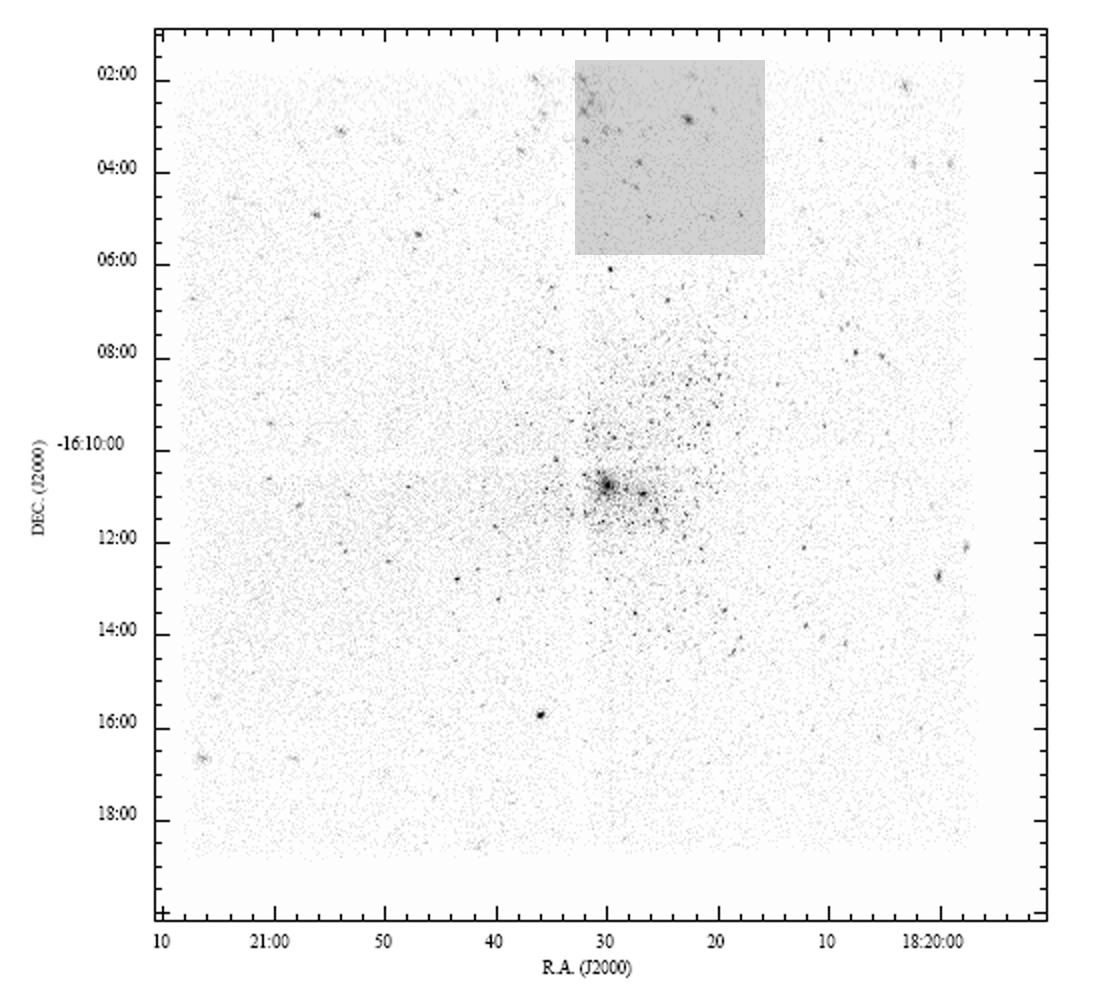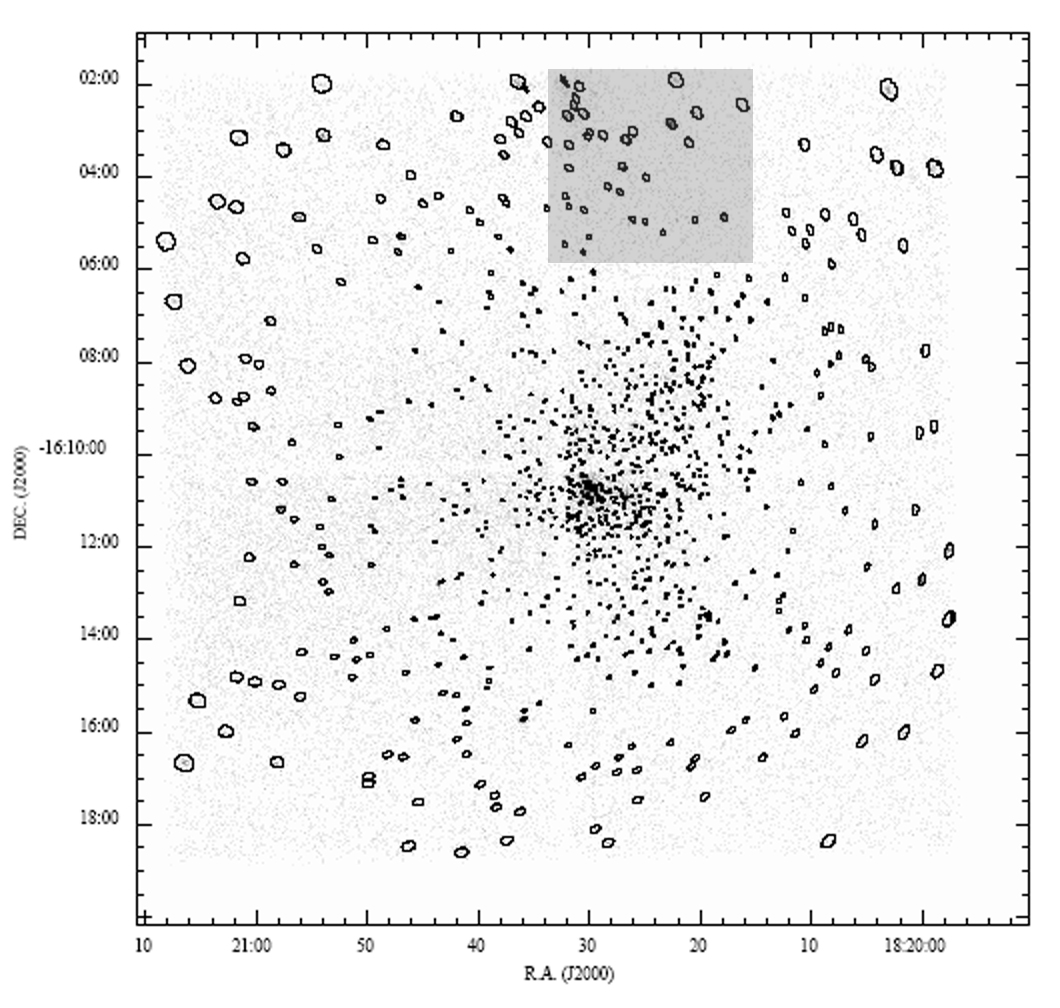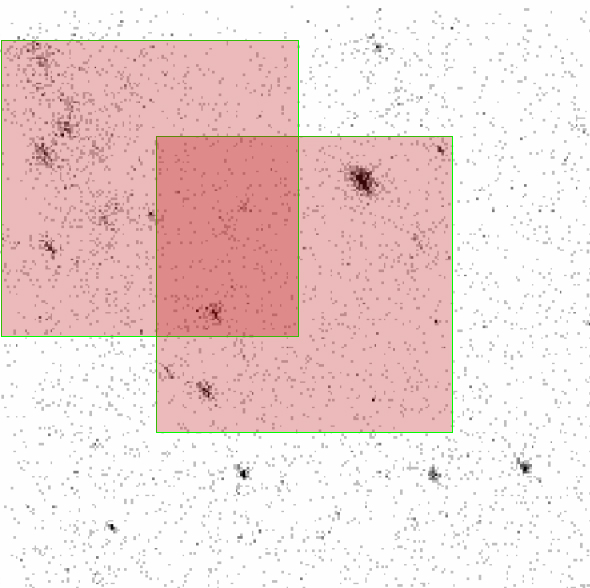Chandra star cluster
The CASt datasets
Chandra_img1.datChandra_img2.dat
Chandra_psf.dat
Astronomical background
Some astronomical images are greyscale with (quasi)Gaussian statistics. This is typical of visible light and radio images. However,instruments observing at high energy X-ray and gamma-ray wavelengths typically detect individual photons, producing images showing individual photons with Poisson statistics. The original datasets are often lists of photon events, and most of the pixels in the resulting images have zero or one photon. Many of the 1-photon pixels are due to a non-astronomical background, often due to cosmic rays hitting the detector. Source detection must thus be based on Poisson statistics and, if the background is low, sources might be detected with only a handful of photons.
An additional problem in astronomical image analysis is that
the optics are imperfect. This is particularly true at high
energies where focusing optics are difficult or impossible to
construct. The optical performance of a telescope-detector system
is often summarized by a "point spread function" (PSF), the
hypothetical appearance of an unresolved astronomical source with
infinite signal and no background. If the observed field has
closely-spaced multiple point sources , or structured diffuse emission,
then image deconvolution using the known PSF is performed to recover an
improved view of the true sky distribution of light.
Dataset
NASA's Chandra X-ray Observatory, launched in 1999, has the
best-focussing mirror and its Advanced CCD Imaging Spectrometer (ACIS)
is a very low-noise detector. Chandra thus detects extremely
faint X-ray sources and can image complex X-ray structures in great
detail. However, Chandra presents several statistical challenges
for faint source detection and image deconvolution.
The datasets provide here are off-axis portions of a Chandra image of the crowded star cluster NGC 6618 which illuminates the bright HII region Messier 17. This cluster is extremely young and is studied to help understand the processes of star formation and early stellar evolution. These figures are obtained from a forthcoming paper by P. Broos et al. (2006). We show three images here:
- The entire ACIS field which is about
17'x17'
in extent (about half the size of the full Moon). The shaded area
shows the portion of the image discussed here. This is the
M17-North region with a cluster of protostars embedded deep in the host
molecular cloud.

- The result of the source detection the
polygons show the PSFs of the detected sources; note that the PSFs of
the Chandra mirror are large and distorted far off-axis. The
source detection is based on a wavelet decomposition of the image
(Freeman et al., ApJ Suppl 138, 185 2002) and based on procedures
implemented in the ACIS Extract and CIAO software packages described in
Townsley et al. (ApJ 593, 874 2003).

- An expanded view of the subimage
regions considered here. The pink boxes show the 128x128 pixel
regions with 1"/pixel (1" = 1 arcsecond). Chandra_img1.dat
gives the upper left region and Chandra_img2.dat gives the lower right
region. The PSF is given in the Chandra_PSF.dat file
at this location with the same 1"/pixel resolution. It is given
as a 17x17 pixel array but can be padded
with zeros as needed.

Statistical exercises
- Recover the sources found using ACIS Extract
- Estimate the counts in each source, with confidence intervals
- Deconvolve Chandra_img1.dat with the PSF to reconstruct a
higher resolution image of the sky.
This dataset was generously provided by Patrick Broos (Penn State University).